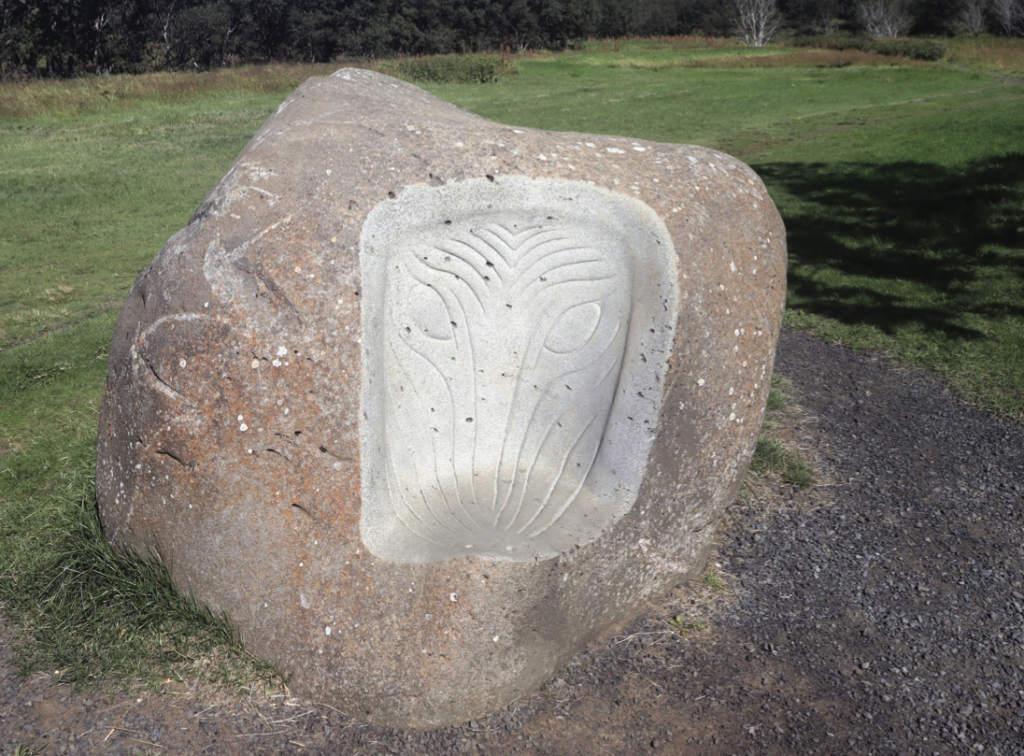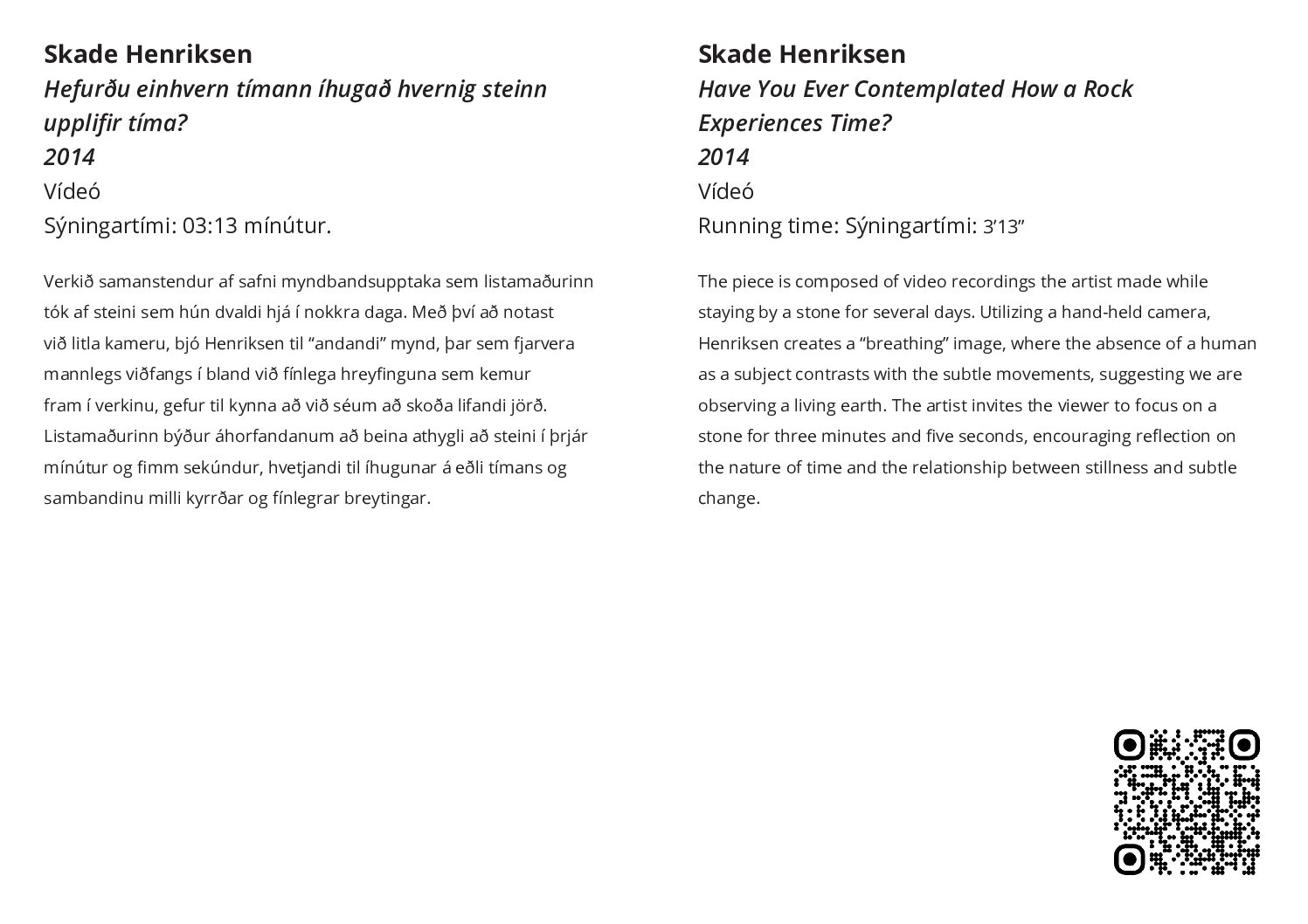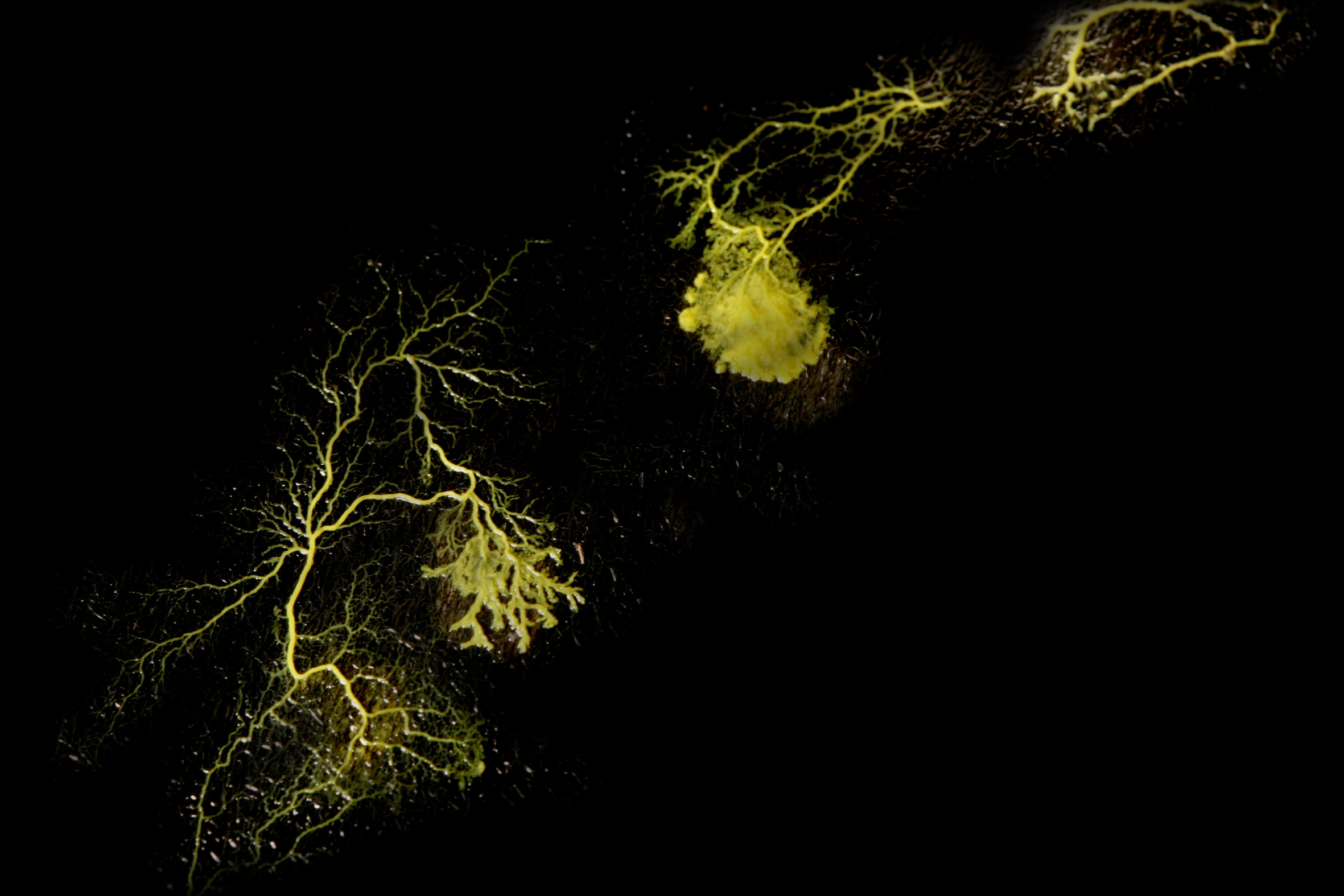
Organic Circuits
Gallery 3, Foyer, Geothermal park Hveragerði, by Varmá river and in Kambar.
September 14th – December 22nd 2024
Anna Líndal (IS), Elísabet Jökulsdóttir & Matthías Rúnar Sigurðsson, (IS), Freyja Þórsdóttir (IS), Heather Barnett (UK), Herwig Turk (AT), Ilana Halperin (UK), Jennifer Helia DeFelice (US/CZ), Magnea Magnúsdóttir (IS), Patrick Bergeron (CA), Pétur Thomsen (IS), Skade Henriksen (NO), Þorgerður Ólafsdóttir (IS)
Organic Circuits is a group exhibition project bringing together international artists who have a tangible fascination with nature expressed through their works intertwining art and science. The exhibition presents pieces that reflect a deep and complex understanding of the natural world based on both research and profound experiential knowledge. Their interdisciplinary projects and collaborative transdisciplinary journeys help facilitate and support a true shift in how we view the landscapes we inhabit and occupy.
The interdisciplinary space between art and science is one where there are unique opportunities for unorthodox and progressive thinking. Collaborations help foster unusual connections and introduce new possible futures for relationships between sentient beings and the organic world. Art assists us in viewing and experiencing by creating a lens that transcends the intellectual and factual. Both science and art are developed through inspiration and wonder about that which is often found in our immediate surroundings.
Emphasis on the all-encompassing ecological crisis we face has flooded our daily lives. The barrage of images and statistics often casts a long shadow that obscures our quotidian ecologically-minded practices and the work of those who are systematically moving towards a deeper understanding of the interconnectedness of life and inanimate forms, algorithmic processes, cycles, existing self-rectification processes, and the fostering of new ones.
Organic Circuits aims to shift our thinking towards reciprocity, renewed alliance with the natural world and offers a place to contemplate where our interactions with our surroundings have brought us. It involves seeking new types of collaboration and mutuality by looking at what is behind us and exploring ideas about moving forward.
If one looks from far enough away — if the perspective is wide enough — the boundary between life and death is obliterated. In the context of nature, absolute death is an illusion. That which is dying is also teeming with life.
Curators: Kristín Scheving, Jennifer Helia Defelice and co-curator Freyja Þórsdóttir.
If one looks from far enough away — if the perspective is wide enough — the boundary between life and death is obliterated. In the context of nature, absolute death is an illusion. That which is dying is also teeming with life.
Imagine that you are a gigantic eye looming over Creation. You do not only discern the more obvious manifestations of life: you perceive it in all its diversity, as through a microscope. Your perception is not confined to human senses and ways of thinking — your vision is wider and deeper. You see farther than the spectrum perceptible to the human eye. You see beyond an anthropocentric vision, shaped by language. You do not possess the tendency to value some things above others — in the bright light the hierarchy dissolves. A weed is not inferior to a rose. Every insect is the same size as you and the complex patterns of diaphanous wings are as vivid as a birthmark on skin. You see how a microorganism is as important as any other organism. How bigger organisms are made up of smaller ones. How the macro is dependent upon the micro.
The deeper your scrutiny, the more indistinct the outlines of individual shapes become. As you observe the life force flowing through the shapes, the boundaries between individuals dissolve. The web undulates in harmony, and breathes like one being in a constant state of flux. The power of transformation is at work wherever you look. An ordinary pebble has a complex history. Aeons ago it had a different texture and colour, forming a part of a mountainside. Everything is connected, both in time and space — and balance is only maintained if each unit retains the freedom to be what it is.
When a dead animal lies motionless in the open air, nothing stirring its skin and fur but the forces of nature, it appears to be devoid of life force. A life form that has taken its last breath, turned cold and stiff, may appear as lifeless as a doll with its fixed smile — but in truth it is teeming with life. Now, as you — free from the restrictions of individual perspective — watch over it and see through all the outlines and layers, this becomes clear. You observe the form of the animal breaking down due to the work of miniscule microbes. They absorb the life force as they transform matter into energy. Were they not to dismantle the form, the web would be impeded. The build-up of matter would block the circular flow.
Life only perseveres through its lack of perseverance. In context with the web of life, death does not entail the decomposition of a life form, but the halting of the flow of energy, for life as a whole requires free creative flow in order to thrive. Death is both an unequivocal end, and a nurturing womb that welcomes new life. It is the end of an individual‘s story, but not the end for the ecosystem. It is an open gateway, an unobstructed path through which the life force flows.
When we do not let go of that which has passed, when it is not permitted to run its course, it may detract from the here and now.
Extinguished sunlight, stored up in fossilised organisms is pumped from the bowels of the earth to serve as fuel. It lubricates the wheels of a mechanism which speeds up the natural rhythm and disrupts the heartbeat of the web of life. But nature is invariably linked to the past in a viable manner. Nature does not permit what was to steal oxygen from what is. Obsessively looking back, extreme nostalgia, is not part of her approach. She is constantly transforming, making space for the new.
We lose touch with our own wisdom when we do not face up to what is. When a deep-rooted vision of the world is maintained, even though it enshrouds an important truth and dims its light. Even though our intuition is invaded by a sense of unease when we move to its mesmerising rhythm. Like a house fly spreading its wings within the confines of a lampshade, we lose contact with the wide open spaces of the natural world. Enclosed within man-made veils, we imagine that the light bulb is the sun. We twirl around and around, yet we circle something other than the source of life.
To be part of a cycle is to be in natural time, to move tranquilly and sense with one’s body. It is the act of facing what the moment holds as it passes and to activate creativity in a manner that elevates life. To be an organism that weaves, without becoming caught in its own web. A spider that spins a home between tree branches. A focused plant, incapable of getting lost in daydreams. Maintaining contact with the source, and transforming sunlight into nourishment.
The doorway that leads into the moment is narrow. This is known by all organisms that do not overthink or over-consume, but rather lose themselves in undisturbed existence — species that have no cultural baggage. You cannot enter unless you allow yourself to shrink. You must shed the thick outer accretions of memories and opinions and ideas. Allow space for something other than that which has been spun around your core — the story you tell yourself. Unravel addictive patterns with self-compassion, pride with humility. Be skinless, with a film of uncertainty covering your eyes, like a coiled snake in the process of forming a new skin.
The doorway that leads into the moment is narrow. If it is to provide space for the spirit, matter must break down. Energy needs space to move, both internally and externally. Without room for movement, the flow of emotions is impeded and they constrict the heart. Without sufficient space, oxygen would not flow through our cells. Life would not flow through the millennia if its forms did not give way to the new. What we see today is only here because it was permitted to transform. An individual organism, its skeleton, the rock it crawls upon — all these were once something else.
How can you make the leap to a new place — into a new vision, a new dream — if you are weighted down by a burden of which you cannot let go?
Deep down, you know that the existence of life and its age-old story testifies to its own wisdom. That the scorching-hot skin of the earth reflects the way we are drifting away from that wisdom. That the direction is wrong when the tracks lead farther and farther away from the cycle of life, and our horizons are not widened, but narrowed. When ideas that do not serve life are not left to break down, while entire species lose their home and their life.
You understand that even though borders, flags and banknotes are bathed in the seductive aura of familiarity, they too reflect a limited perspective. That lines, boxes, conveyor-belts and screens direct your consciousness into a restricted space that leads to a feeling of unease. You remember that the galaxy which holds your planet is a spiral, that your DNA is a spiral. That life does not travel in straight lines, but rather it is a web, constantly being spun. A growing internal story that revolves in circles. A snake that does not lose its starting-point, but dares to shed its skin and grow a new one.
You suspect that the doorway that leads into the moment, the cycle and the heart, is within reach. That you need only slow down a little, breathe deeply, and permit your instincts to guide you to the right place.
You feel that you are here and now, when the creative impulse takes you over. When possibilities take flight in your mind, and you feel compelled to bring them into the world. You feel that you are in a state of tranquillity when unexplored possibilities remind you of your own fecundity and beg you to be the soil, to be the womb that permits them to grow, to be the wave that washes ashore something new. You are neither in the past nor the future, but in the equilibrium that permits the goddess to pluck your strings and infuse new life. Your heart beats as if it is healthy. The feeling is of a joyful pulse of the breast. Inspiration. You are not simply matter that eats and sleeps and your functioning is not governed by fear. You sense your own liveliness, for you have given it space. You feel it move you in the right direction. Your orbit embraces the sun that gives life, your horizon is unbroken — you have good rhythm.
Life only perseveres through its lack of perseverance. You understand that you cannot shield yourself against the unpredictability of existence without separating yourself from the creative force in which it is rooted. You can only access liveliness if you stop running after certainty. To choose coalescence with desensitisation due to a fear of death is a perilous comfort. But the departure from the familiar, away from the box and into the circle, does not lead to ultimate oblivion, but to renewed life.
Absolute control is illusory. In a world that rotates counterclockwise around life and burns it up, to dream of something else is a safer option. You break apart, you grow smaller — but when you stick your head up out of the soil, you see with fresh eyes. And when the heart has reclaimed its acuity and is beating in time with life, certainty is found everywhere — even in uncertainty.
https://vimeo.com/1009223833?share=copy#t=0
Freyja Þórsdóttir.
Translation: Anna Yates
Artists:
Anna Líndal is an Icelandic artist and educator known for her interdisciplinary approach to art and environmental issues. She served as a professor in the Department of Fine Art at the Iceland Academy of the Arts in Reykjavík from 2000 to 2009. In 2011-2012, she pursued an Advanced Master of Research in Art and Design at St. Lucas University College of Art & Design in Antwerp. Earlier in her career, Anna earned a Higher Diploma in Fine Art from the Slade School of Fine Art, University College London, between 1987 and 1990. Her work frequently explores the Anthropocene and climate change, using creative practices to foster environmental awareness.
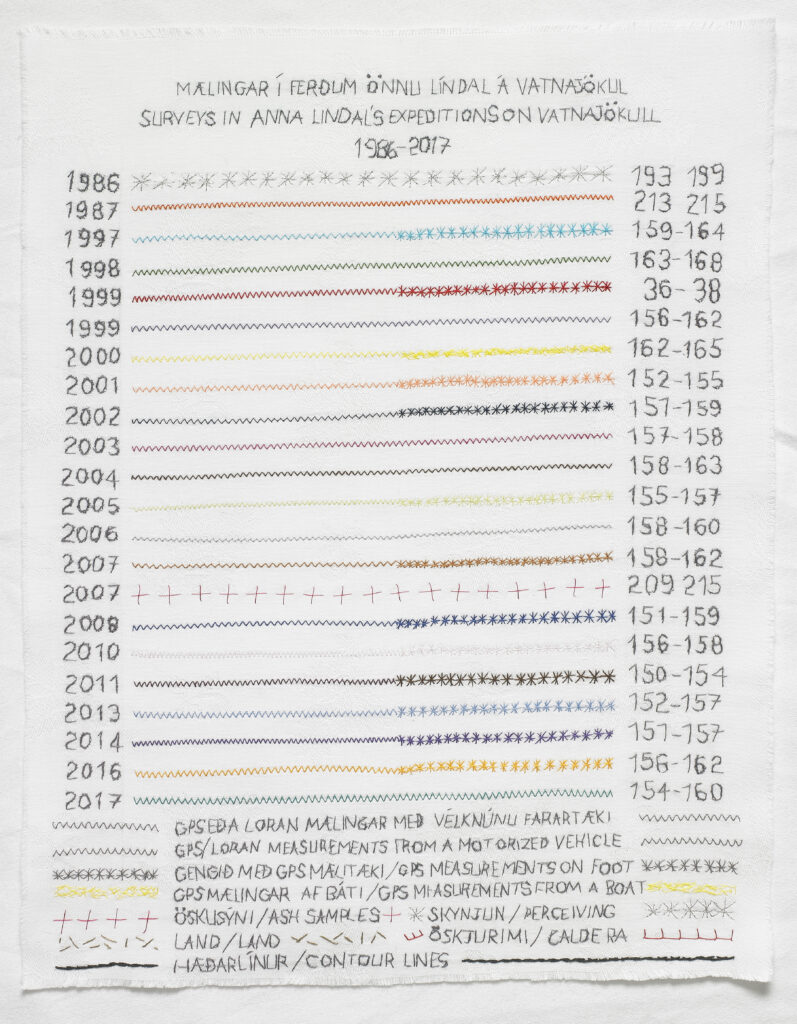
Elísabet Jökulsdóttir graduated from Kvennaskólinn í Reykjavík in 1987. After that she studied screenwriting and has a BA diploma in stage-art from Iceland University of the Arts from 2008. Elísabet has worked as a journalist, she is an active speaker for the environment and amongst other things she ran for president in 2016. She has received many awards for her poems, short stories, novels and plays as well as having been nominated for the Nordic Council Literature Prize.
Freyja Þórsdóttir is educated in philosophy and focuses on writing among other things. Recently she has been writing a regular column for the radio program Víðsjá on the national radio broadcasting channel Rás 1. In recent years she has, as an author and theorist, participated in various projects that have frequently been on the border between the artistic and the academic. In addition, she has received recognition for poetry.
Heather Barnett is an artist, researcher and educator working with natural phenomena and emergent systems. Employing live organisms, imaging technologies and playful pedagogies, her work explores how we observe, influence and understand multi-species ecosystems. Recent work centres around nonhuman intelligence, collective behaviour and experimental systems for co-enquiry, working with slime moulds, ants and humans. Heather is Pathway Leader on the MA Art and Science, and co-director of the Living Systems Lab at Central Saint Martins (University of the Arts London) and founding member of The Slime Mould Collective.
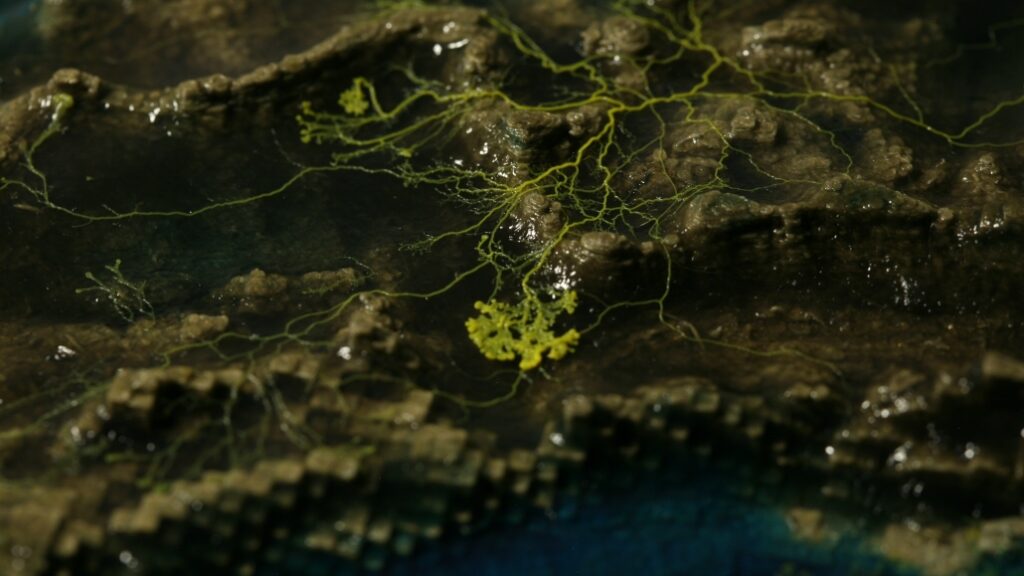
Herwig Turk lives and works in Vienna. His projects probe the interconnectivity of the fields of art, technology and science. Since 2016 he has been conducting artistic research on the Tagliamento River in northern Italy and other river systems like the Danube or the rivers in the area of Bolzano cooperating with artists and scientists. Since 2021 he leads the development of the project Rift//Landscape//Read with Zdravko Haderlap and the multidisciplinary Art and Research Group in Lepen/Carinthia Austria. From 2014 – 2022 he worked as Senior Artist at the department Social Design at the University of Applied Arts, Vienna.
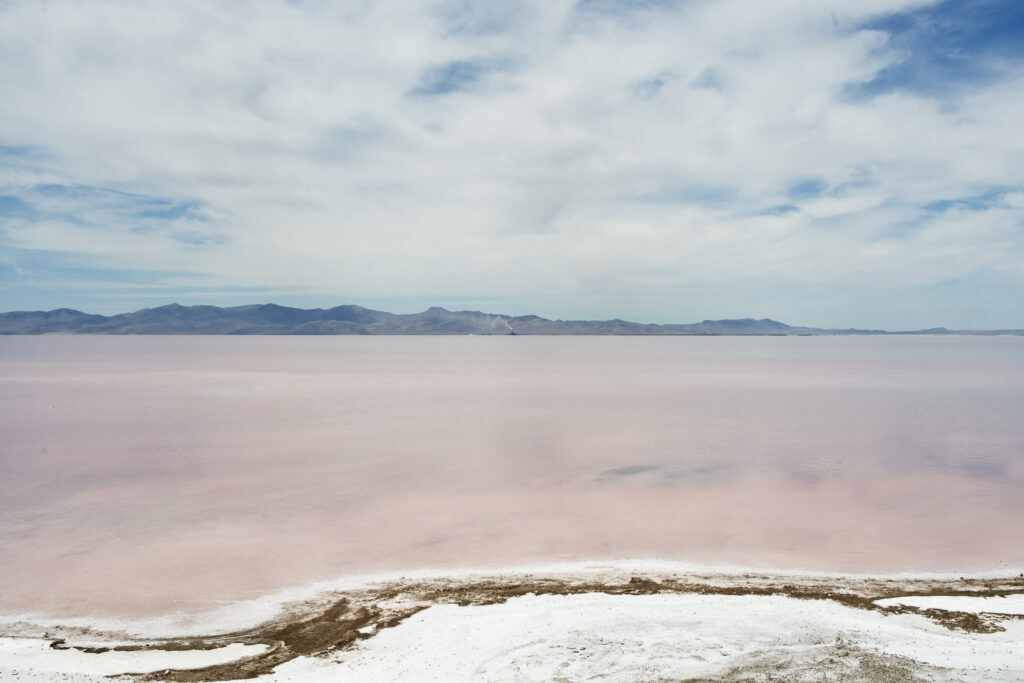
Ilana Halperin artistic focus and interest lies in the relationships between geological phenomena and the quotidian. Halperin’s work is predominantly focused around connections between geological time and human time. She conducts fieldwork with specialists worldwide, including minerologists, geologists, volcanologists and archaeologists creating her work by placing herself or others directly in geologically significant or active locations. She employs a variety of media, writing, performance, printmaking, sculpture, drawing, and film. She lives and works in Glasgow, Scotland.
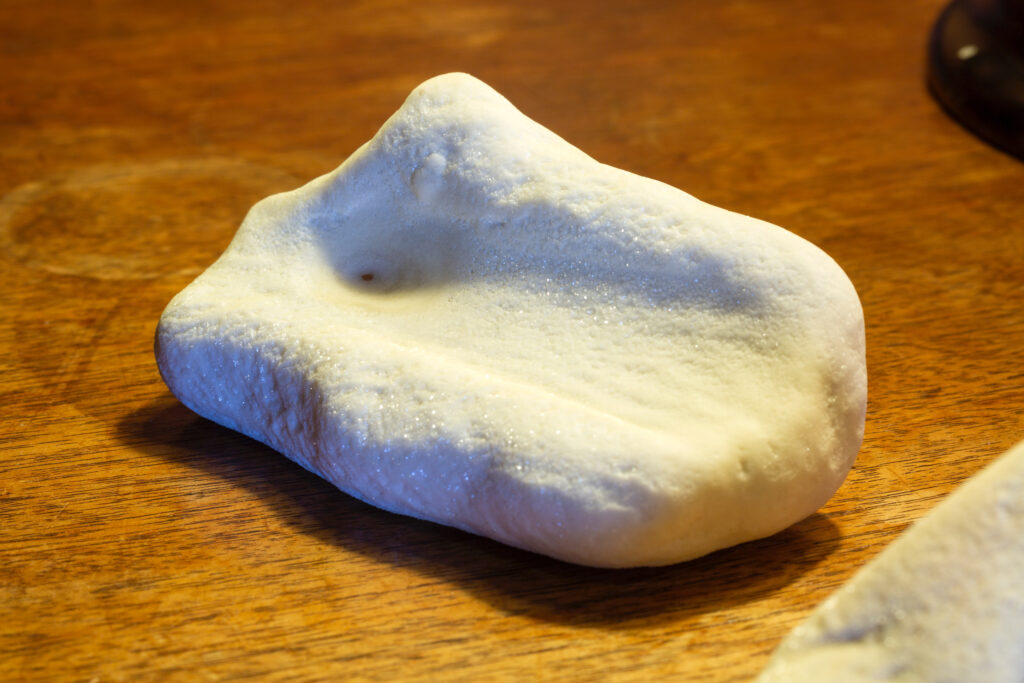
Jennifer DeFelice is a conceptual artist focusing on the performative potential of nonverbal, experiential aspects of artistic encounters that gently allow for the transformation of everyday paradigms. In addition to performance, her expressive repertoire includes work with video, installations, situations, participatory projects, music, and new media. Her work transcends the confines of gallery operations and what we traditionally consider art and its means. She has long asserted her valuable artistic sensibility in pedagogical and curatorial practice and in co-creating the concepts of artistic events and institutions. She facilitates the softening, complicating, and expanding of the paths through which artistic operations flow, all in a critically artistic spirit. She lives and works in Brno, Czech Republic.
Magnea Magnúsdóttir is a restoration ecologist. She works as the environmental and restoration manager at Orka náttúrunnar. Having specialized in moss restoration. Magnea has a special fondness for Icelandic moss of all kinds. In her work, she focuses on the restoration of natural vegetation after its careful removal during infrastructure projects that require the removal of top soil. She is also an artist having made artworks out of moss. Through her work, she aims to raise awareness about the impact of human activity on vegetation and the environment, emphasizing the importance of allowing natural processes to flow unhindered.
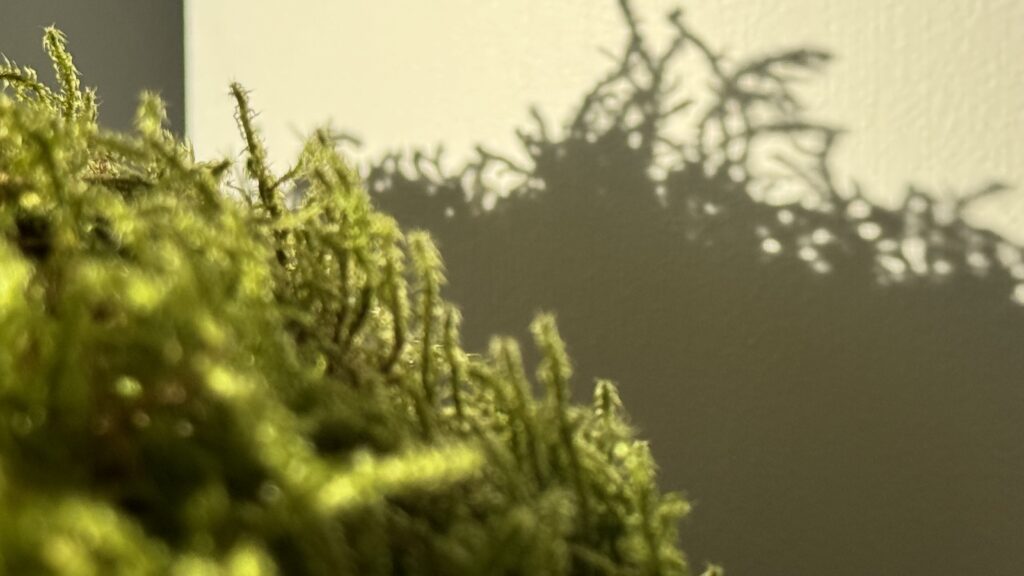
The artist Matthías Rúnar Sigurðsson graduated from Iceland University of Arts in 2013. At the beginning of his career he worked mostly with drawings but soon became interested in sculpture. The interest derived from a book about ancient art in which many of the pieces were sculptures, making him consider what could be done today with modern technology if that could be achieved thousands of years ago. Matthías started his art making with a hammer and chisel, which was highly time consuming but he now works with electric tools such as a grinder and a handheld milling machine, which speeds up the whole process.
Patrick Bergeron graduated as an engineer and then moved towards creation after working for the National Film Board of Canada. Since then, he shares his artistic career with his work in the digital visual effects industry. In this field, he has participated in projects like The Lord of the Rings and The Matrix. His art installations and experimental videos have been presented internationally in galleries and film festivals (South by Southwest, ARS Electronica). In his artworks, he elaborates and studies the concepts of time, memory and movement. He is interested in the vegetal world, its cycles and the natural forces that interact with it. He lives and works in Montreal.
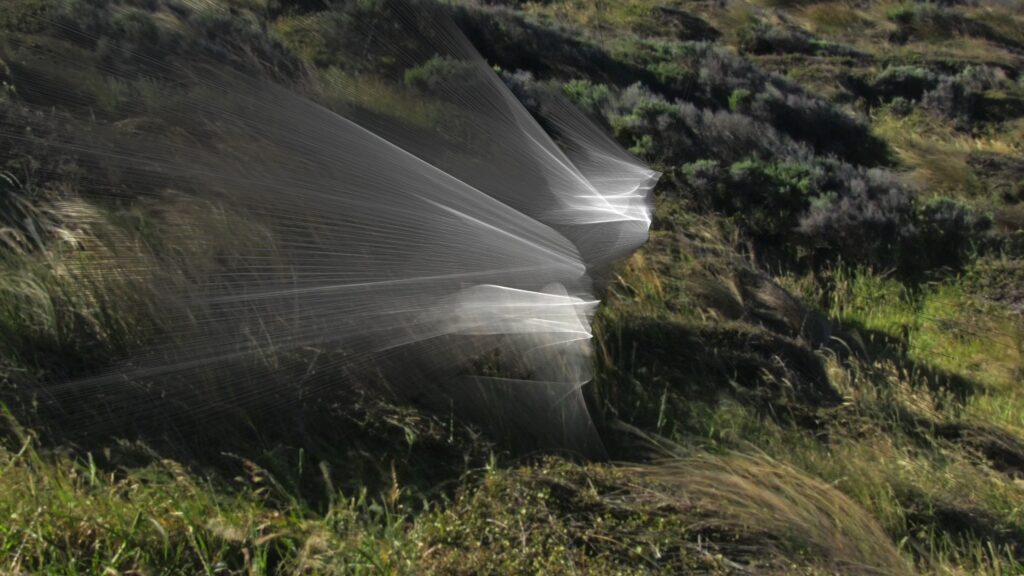
Pétur Thomsen is an Icelandic artist and photographer focused on the disruption of nature, both in his photographs of the Kárahnjúkar power plant project area in his series Imported Landscape, and in his works Umhverfing (an Icelandic word for the state between nature and environment) and Ásfjall (Mt. Ásfjall). In his latest series Landnám (Settlement) Pétur Thomsen is observing or rather operating as an investigator out in the field during the winter nights, investigating three aspects of land use in the south of Iceland: mines, tree plantation and farmers’ use of land. He received his master’s degree in fine arts from the École Nationale Supérieur de la Photographie in Arles, France in 2004. He lives and works in the south of Iceland.
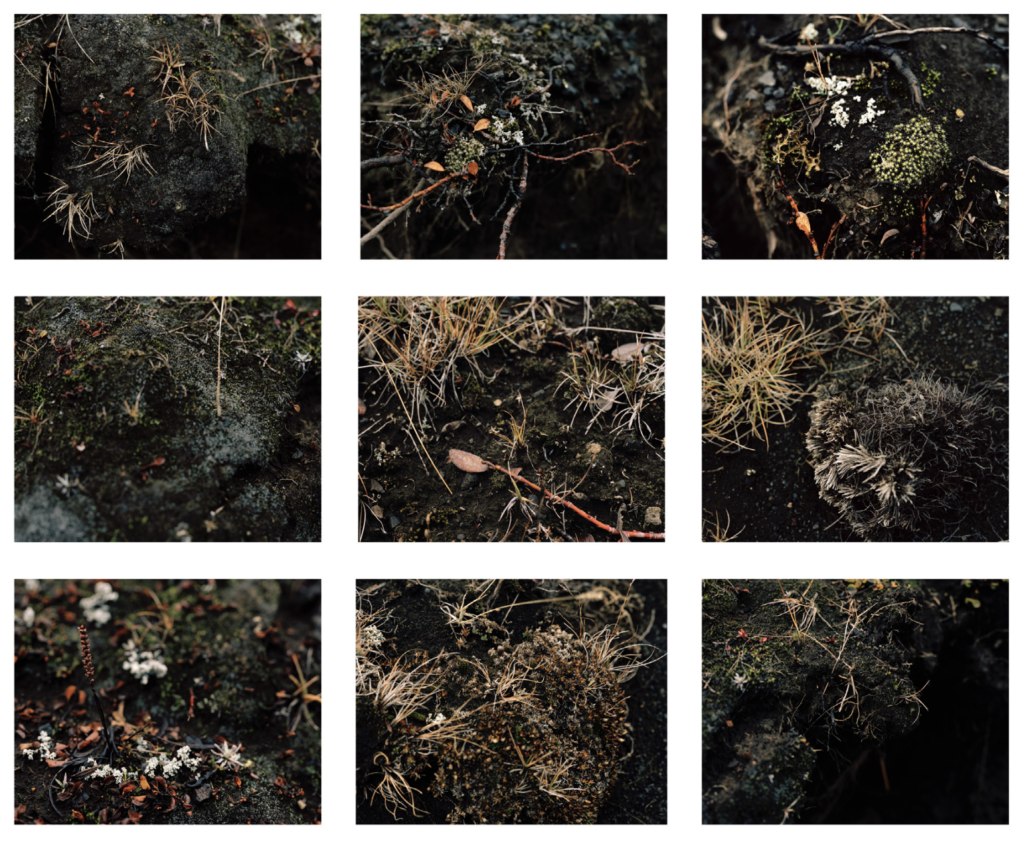
Visual artist Skade Henriksen works with drawing, photography, sculpture and installation. Skade combines the poetic with a semi-scientific approach to artistic research. With a background as a research technician, she uses scientific instruments and records as a working method and reference point in her works. Central to her work is the exploration of landscape, focusing on landscape change, mining and notions of time and value. Henriksen holds a master’s degree from the Art Academy in Bergen. Henriksen lives and works in Bergen.
Þorgerður Ólafsdóttir lives and works in Iceland. In her artistic practice she considers various objects and phenomena that are connected to our understanding of and relation to the natural world as it meets, overlaps and is interpreted within human environments. Her work is layered in process, research and fieldwork where her approach is recognised through different notions of time, narratives and scales. She has also contributed to various artist-run spaces, projects, festivals and publications. From 2014 – 2018 she was the director of The Living Art Museum, an artist-run museum established in 1978. In 2021, Þorgerður received a research permit to travel to Surtsey island. In her recent publication Island Fiction, Þorgerður weaves together artworks with essays that address the complex aspects of the existence, history and meaning of Surtsey.
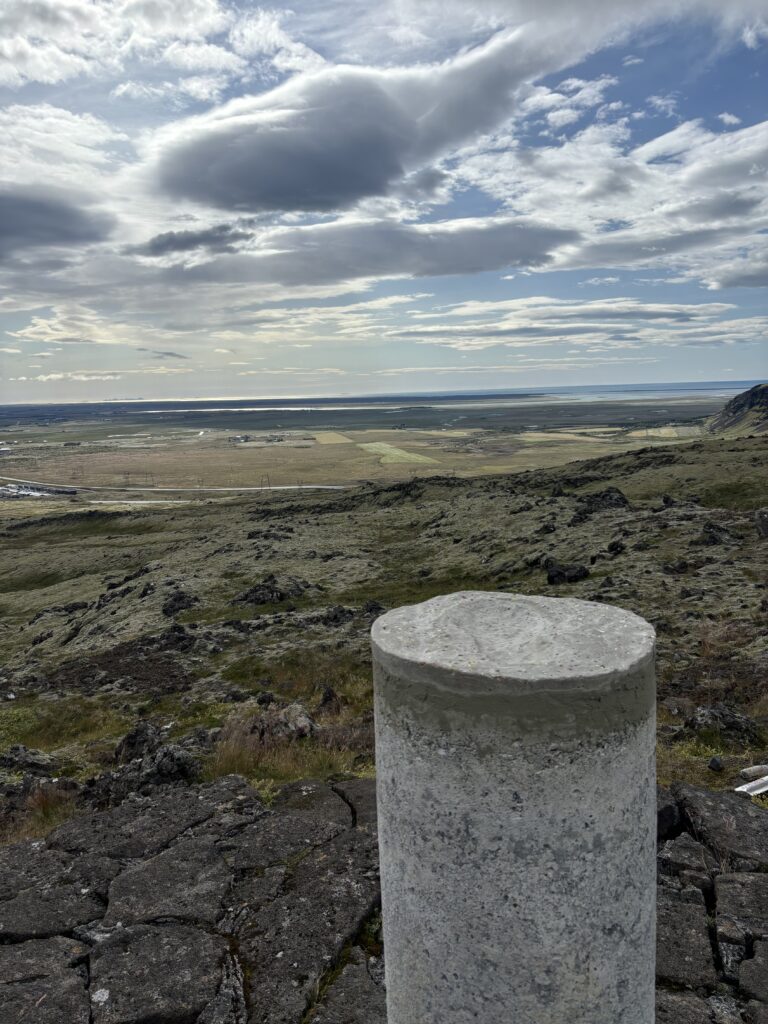
Supported by:
South Iceland Development Fund, Federal Ministry Republic of Austria. Austrian Embassy in Copenhagen, House of Arts – Brno, CZ, Geothermal Park Hveragerði, the town of Hveragerði, Ölfus, Brno Faculty of Fine Arts, Central Saint Martins (University of the Arts) UK, Norwegian Embassy in Iceland.
Here is a pdf. brochure you can download:
Here you can read about the artworks:


